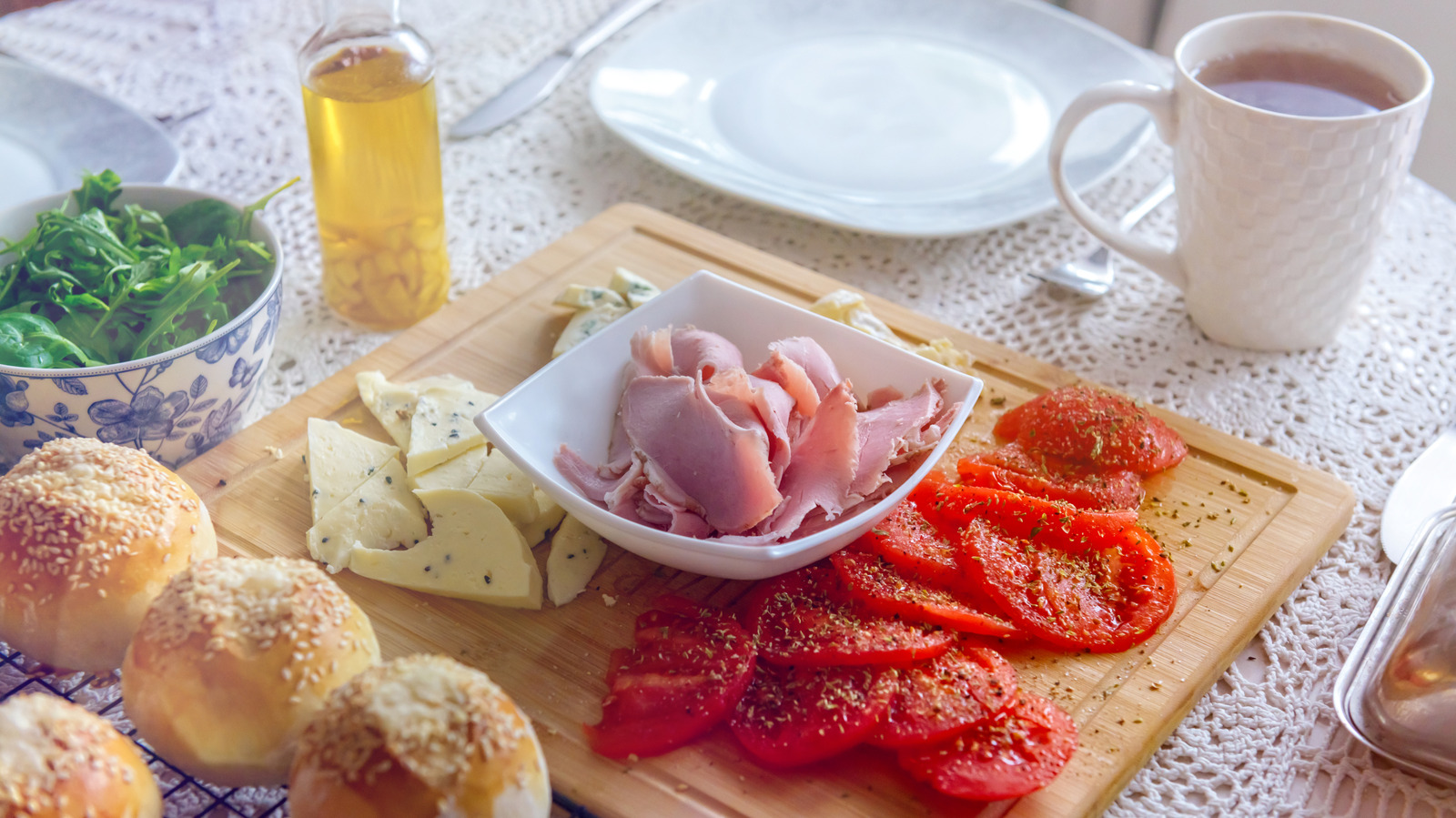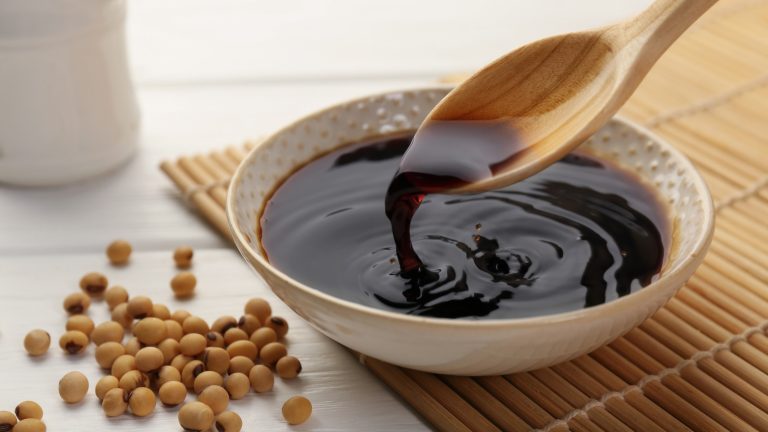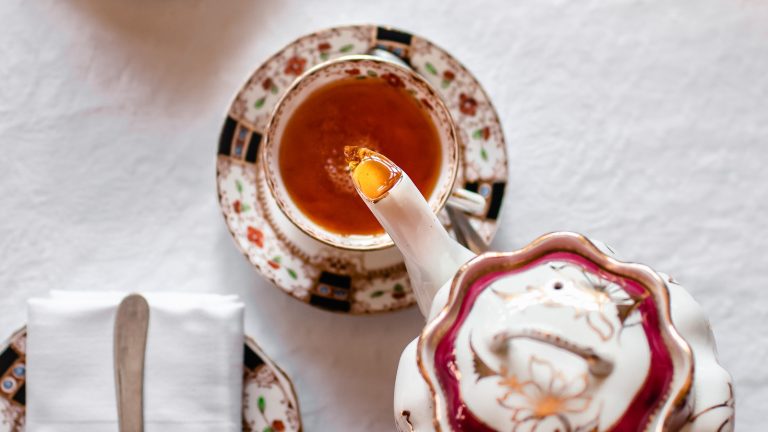We may receive a commission on purchases made from links.
Morning meals worldwide come in many forms: From grilled fish and natto in a traditional Japanese breakfast to a bowl of pho in Vietnam. And another regional dining style worth paying attention to is the Balkan breakfast platter. The embracing template assembles fresh produce like cucumbers, tomatoes, and peppers — often kept whole — as well as pickles, cured meat, bread, eggs, and cheese. The components are nibbled on separately, lending an open-endedness that recalls girl dinner. In fact, this platter-based dining analogously entered internet food culture via TikTok, with some citing it’s a not wholly accurate summarization of actual Balkan dining habits.
Nevertheless, the Balkan breakfast is a balanced meal you should try. And a foundational element of the experience is the cheese, which not only lends protein, but a particular palate. Fresh and aged dairy products are an indispensable part of this region’s culture, so selecting a traditional variety cements the meal’s Balkan character.
And since this slice of Europe covers around a dozen countries, the diversity of cheese offerings enthralls. Whether you prefer your cheese fresh or aged, brined or in cream form, and with a variety of dairy bases, there’s a fermented milk offering for you. So procure some tasty Balkan cheeses to complete your breakfast platter.
Serve kajmak for a classic Balkan breakfast cheese
One of the Balkan’s most beloved cheese options is kajmak. Especially popular in Serbia and Croatia, you’ll also find this soft, young cheese in Turkey, and other Balkan countries. Reminiscent of clotted cream, this fresh cheese variety comes with a thick yet airy consistency. Meanwhile, the flavor’s strong — reminiscent of a rustic butter — but with uniquely sweet and fermented undertones. The utilized dairy includes everything from buffalo to goat, cow and sheep’s milk, further influencing the taste. In Serbia, there’s a more full-flavored barrel-aged variety.
Kajmak often appears as a breakfast item in the Balkans; its flavor ideally balances sweet-savoury contexts. You could serve alongside cut up vegetables, smear atop bread, or accompany baked goods. Dress it up with a dash of honey or a homemade three-ingredient strawberry jam for a delicious sweet finish. Think of it like cream cheese with more character. If you’re fortunate to have a Balkan grocery nearby, you likely find a container there.
Although unlike most other regionally specific cheeses, you can even craft a batch at home. A dairy heavy mix of cream cheese, butter, ricotta, and sour cream offers a close approximation. Or for a more ambitious route, replicate via a fully traditional assembly. Purchase raw milk, add salt, and then repeatedly boil and cool while spooning off the thickened fat that forms atop. Store in the fridge, ready to impress friends and family with Balkan flavors.
Integrate feta into your morning routine
For a Balkan dairy option you’ll certainly track down, turn to feta. The salty, crumbly yet velvety cheese originated in Ancient Greece, but also appears elsewhere on the Balkan peninsula, like in Bulgaria and Romania. By way of its brine, feta’s composition is moist and creamy, imbuing a dose of freshness come morning time. No surprise the cheese frequently appears on Balkan breakfast plates.
To serve in the morning, simply take the cheese out of the liquid and cube. These salty dairy bites perfectly complement fresh produce like cucumbers, tomatoes, and onions. Alternatively, you could also scramble directly into eggs, or craft the viral crispy feta fried egg, thereby combining two internet trends into one. And for a sweet finish, bake the feta with honey, creating a consistency spreadable on bread.
Furthermore, explore different feta varieties to complement your morning dining experience. Like with kajmak, there’s an intensified barrel-aged feta that brings richer flavors. Meanwhile, for a more delicate morning start, Bulgarian feta is creamier. Best of all, the dairy product is also readily produced in the U.S. and France, making it easier to come by than other Balkan cheeses. Just make sure to buy and store the cheese in brine, thereby preserving the creamy flavor, and extending the shelf time to several months. After all, you could always hold onto the liquid for a top-tier savory martini once the evening rolls around.
Try urda for a ricotta-like lightness
For many, the slowed morning appetite warrants mellow flavors. So for a soft and likeable dairy product popular in several Balkan countries, try out urda. Reminiscent of ricotta, this young cheese is made exclusively from whey. So in contrast to dense curd protein bundles, this dairy-based liquid forms an especially gentle and creamy cheese.
Urda offers a moist composition with a light grainy crumble. The flavor’s predominantly milky with a gentle underlying tanginess and sweetness. While it doesn’t contain much fat, urda still packs in protein, making it a great foodstuff to start the day. Like other cheeses in the Balkans, sheep’s and goat’s milk are employed in addition to cow.
The cheese’s palate melds especially well with sweet preparations. In Romania, it’s nearly always used for fillings in desserts. Integrate it into Balkan style breakfast by spreading on toast, then drizzling with a wild honey, or spooning on a small-batch jam. Brew some Greek or Turkish style coffee alongside, and enjoy a fresh, fast, and flavorful start to the day. Finding urda outside of the Balkans can be difficult, as it’s mainly sold at markets. So either seek out a niche South East European grocer, or swap for ricotta, which lends a similar character.
Sample kashkaval cheese for a firmer consistency
While many breakfast cheeses often come in a softer consistency, there’s room for firmer dairy, too. So seek out kashkaval, a foodstuff popular from Slovenia all the way to Turkey, with a special status in Romania. Created both by small mom-and-pop operations and in a commercial setting, it’s among the most popular Balkan dairy products.
Like cheddar, kashkaval is a ripened cheese, with a semi-firm yellow hue. Although visually similar, the texture’s creamier akin to mozarella and the flavor delights with notes of milk, olive-oil-like nuttiness, some salt, and citrus-like acidity. The employed yeasts in combination with the aging process create different flavors based on the area of production.
Kashkaval makes for a delicious raw sliced cheese — serve alongside the smorgasbord of fruits, vegetables, and nuts that comprise Balkan breakfast. Plus, it also melts readily, with common applications involving frying whole slices or shredding atop dishes. Simply heat kashkaval in a pan, or garnish eggs, enjoying its flavorful, delightfully stretchy composition. So order the Balkan Kashkaval Cheese on Amazon or track down the similar Italian caciocavallo to complete your Balkan breakfast.





